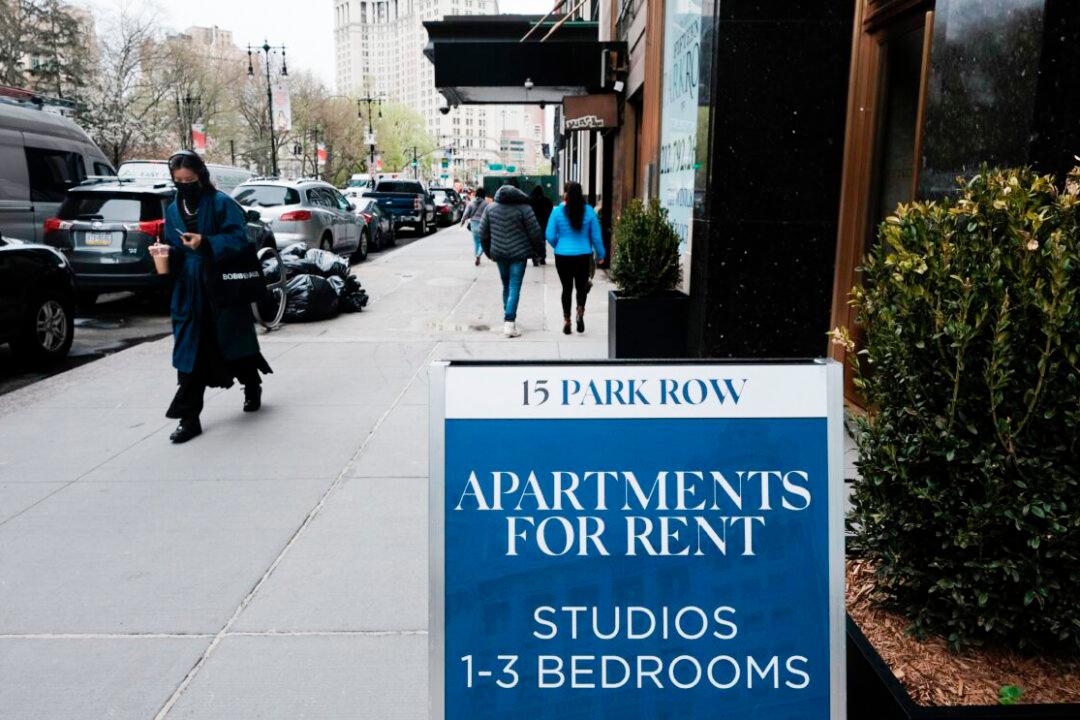Rents across the United States have been increasing over the past several months, adding economic pressure on millions of households.
In January 2022, rent for 0–2 bedroom properties rose by 19.8 percent year-on-year, according to a report published by Realtor on Feb. 22. This was the eighth straight month in which the rent for these properties grew by double digits. In December, rents for 0–2 bedroom properties had risen by 19.3 percent year-on-year. The median rent in America’s 50 largest metros climbed to $1,789 in January.






